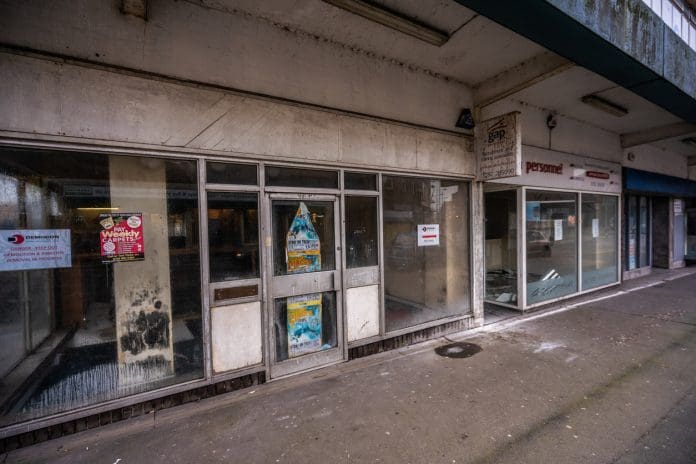Prime Minister Rishi Sunak has announced a £1.1bn Long-Term Plan for Towns designed to empower 55 towns to tackle rundown centres, half-empty high streets and anti-social behaviour. Architect Alex Craggs says creating sustainable urban centres means addressing a lack of individuality and embracing our heritage
Town centres across the UK have long been primarily focused on retail, giving the same standard offering of national brands across clothing, home furnishing and grocery stores to residents.
The current planning system fails to place the individual needs and opportunities of town centres at the heart of their development and, as a result, footfall on high streets and the quality of life for local residents continue to decline – a fact that was acknowledged by the Prime Minister when he announced 55 “overlooked” towns and a Long-Term Plan for Towns to rectify the issue.
This lack of individuality between different urban centres is also causing towns and high streets across the UK to lose their cultural identity and heritage, resulting in an urban landscape that looks like local councils have pressed copy and paste instead of promoting the creation of locations that reflect the local character and culture of a place, and the needs and aspirations of the communities that live there.
It is imperative that local authorities, working with other key stakeholders, think outside the box in a bespoke way when it comes to sustainable town centre planning and regeneration to improve the quality of life of residents, revitalise local economies and promote a community spirit.
Retail-led development: Buyer beware
It can be tempting to cling to the tried and tested retail-led solution for town centres because, in theory, at least, it just takes one anchor tenant – one international clothing company or celebrated restaurant – to attract other occupiers and increase footfall overall. Often, this change has a ripple effect on surrounding businesses, which also benefits.
A retail-first approach by holding out for the gold standard anchor tenant, even if successful, is not a long-term solution and does not encourage sustainable growth.
The flaw in this plan was demonstrated perfectly in the Grand Central development in Birmingham, whose flagship John Lewis store closed after five years in 2020. The huge retail space that covers three floors in a landmark location has been lying vacant for three years, with the owners struggling to find another retail tenant. It is reportedly being turned into a mixed-use development with facilities including offices, a gym, a restaurant and a food hall.
If the Long-Term Plan for Towns is to succeed, it must reflect local needs
One solution that offers hope of sustainable growth for town centres is implementing plans that promote the diversity of residents and their needs. This means ensuring that the infrastructure and land uses are reflective and inclusive of the community.
For example, if the town has skewed towards an older population, ensuring high-quality later living developments is necessary, together with local amenities and a well-designed public realm that make these developments inclusive within the town centre community.
Other services, including, but not limited to, education, healthcare and flexible working spaces, can all be carefully considered and incorporated into sustainable town planning and urban regeneration.
The most comprehensive way of ensuring that different sectors and infrastructure are combined together in a cohesive and considered way is for local authorities to adopt a more concerted and wholescale approach to mixed-use urban regeneration and master planning. While many councils have already adopted this, there are often flaws in the way the approach is executed, and this prevents it from being applied to its full potential.
Preserving heritage value
One of the most common mistakes is that heritage assets in urban centres are seen as a barrier to development and a problem to be navigated rather than an opportunity to promote a town’s cultural or historical identity. The preservation of heritage within the public realm has a direct correlation to residents’ local identity and pride in their community.
In many places, buildings of either social or historical importance have slipped into disrepair due to their traditional use becoming untenable within that location. Through sympathetic restoration as part of a holistic masterplan, they can be given a new sustainable purpose, whether for cultural, civic or leisure use.
An example of how this can work with fantastic results is St Mary’s Church in Lichfield, Staffordshire, where the disused church building on the market square was transformed into the city’s new public library and community space, becoming a constant hub of activity on the high street.
Masterplanning requires examining a town centre or a high street holistically. To ensure that this approach is taken, local authorities could consider appointing a Regeneration Panel, whose purpose would be to accelerate and coordinate every regeneration-related project in a town centre and tie these schemes into the overall urban grain of a community.
As well as liaising with ongoing projects, the panel would also be responsible for identifying opportunities for progress and finding appropriate private companies to partner with to get the project off the ground.
Having a specific team who is dedicated to ensuring that regeneration is consistently happening in the town but who are also embedded within the communities and therefore have knowledge of specific local needs means that projects are meaningful to the community, sustainable as part of a thriving local centre and will have maximum impact.
Some people’s ideas of a prosperous town centre are rooted in nostalgia, with individual butchers, bakers and shopkeepers making up the town centre. This traditional view cannot always be allowed to hinder a high street’s viability or a town centre’s progress through regeneration.
Spaces that accommodate 21st-century needs, such as flexible working spaces, healthcare and later living, can produce sustainable, long-lasting change and create town centres that genuinely serve their local communities.
Read more from the More than Stores report here.
Alex Craggs
Architect and urban design specialist
Marrons
Tel: +44 (0)330 912 2670












![[VIDEO] Local planning inspector recruitment to begin in earnest in new year A drive to recruit local planning inspectors will begin in the new year](https://www.pbctoday.co.uk/news/wp-content/uploads/2025/12/iStock-2159482095-2-218x150.jpg)

